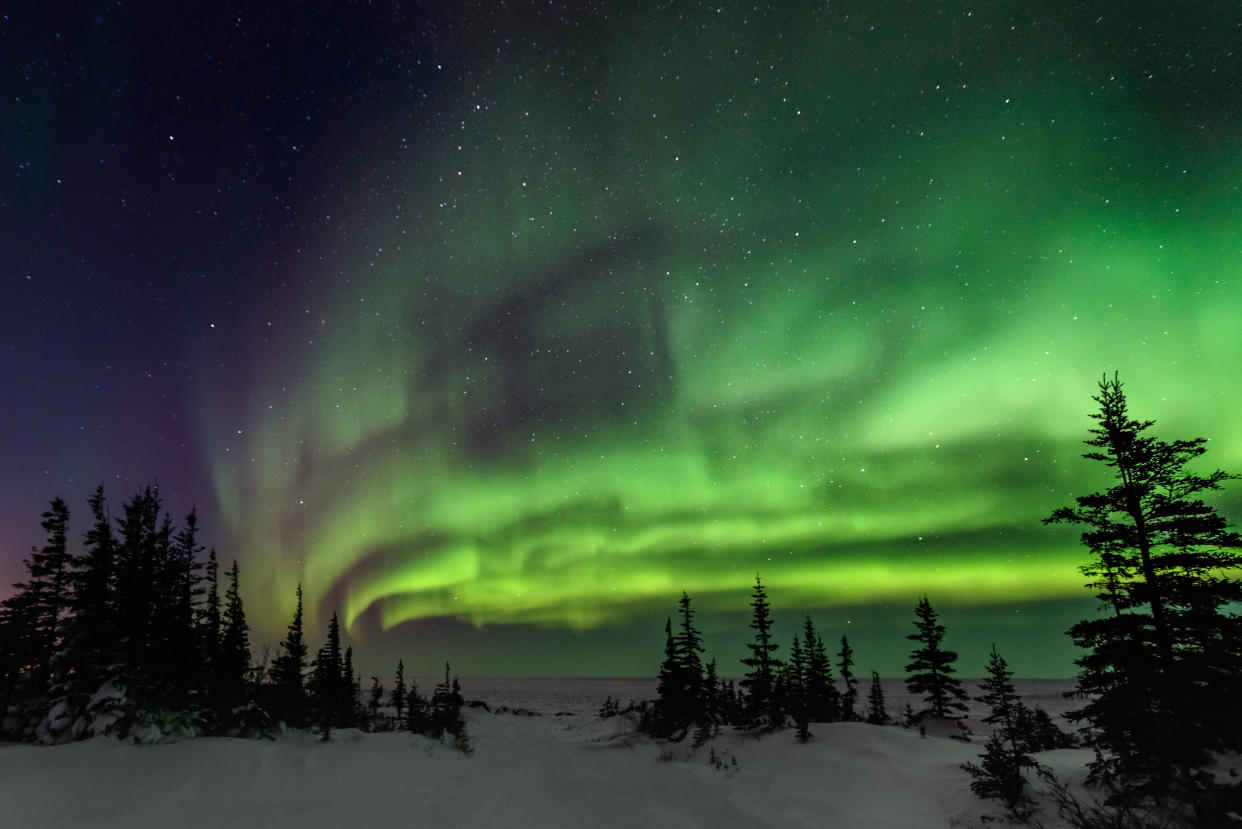Northern lights could be visible across the U.S. this weekend because of a severe geomagnetic storm. Here's how you could see it.

An unusually strong geomagnetic storm is headed toward Earth this weekend, and a severe storm watch has been issued — the first such alert in nearly 20 years.
The National Oceanic and Atmospheric Administration (NOAA) has issued a Severe (G4) Geomagnetic Storm Watch for the evening of Friday, May 10, continuing into the weekend.
This storm could trigger the northern lights to be seen across parts of the United States. Watches at this level are very rare, according to NOAA.
🪐 What are the northern lights?
The aurora borealis — aka the northern lights — are the result of disturbances in the magnetosphere caused by solar wind. Due to a series of X-class solar flares (the most powerful category flare) and coronal mass ejections (CMEs) that began on May 8, the lights will be visible in parts of the U.S. beginning Friday around 8 P.M. ET.
Both solar flares and CMEs are created by the sun’s magnetic fields. However, they differ in that a solar flare is a flash of light, while a CME is a cloud of magnetized particles shot into space.
☀️ What is a geomagnetic storm?
CMEs are explosions of plasma and magnetic fields from the sun’s corona. When directed at Earth, they cause geomagnetic storms. These storms can disrupt communications, radio and satellite operations, the electric power grid — and trigger auroral displays on Earth.
At least five Earth-directed CMEs have been observed and are expected to arrive Friday, May 10, and persist through Sunday, May 12.
🚨 What can happen during a severe geomagnetic storm?
There are five geomagnetic storm categories, ranging from G1 (minor) to G5 (extreme). According to NOAA, a category G4 (severe) storm, like the one that’s forecast for this weekend, can cause widespread voltage control problems, disrupt spacecraft operations, degrade satellite navigation for hours and disrupt radio navigation — among other things.
In preparation for the storm, NOAA has alerted power plant operators and spacecraft in orbit to take precautions.
🗓 How often do these storms occur?
According to NOAA, the last G4 (severe) took place on March 23, 2024, and the last G5 (extreme) occurred in 2003 in an event dubbed the “Great Halloween Solar Storms.”
In late October of that year, a massive sunspot ejected an enormous solar flare, resulting in a series of severe geomagnetic storms that hit G5 levels on Oct. 29 and 30.
The resulting CME had a huge impact. Astronauts aboard the International Space Station were forced to take cover from high radiation levels (something that had only happened twice before in the mission’s history).
It also knocked out half of the satellites orbiting Earth at the time, disrupting TV and radio services and damaging a Japanese scientific satellite beyond repair.
The last time a severe geomagnetic storm watch was issued was in January 2005, after a giant sunspot named NOAA 720 exploded.
📍Where you might be able to see the northern lights
According to the Space Weather Prediction Center (SWPC), the aurora may become visible this weekend over much of the northern half of the country, and maybe as far south as Alabama to northern California.
The SWPC’s Aurora Dashboard can be used to predict the aurora’s visibility tonight and tomorrow night.
💡How you can best view the northern lights
Stay up late. NOAA advises that the aurora is best viewed typically within an hour or two of midnight, between 10 P.M. and 2 A.M. local time.
Get away from light pollution. They also recommend leaving areas with bright city lights and moving toward the northern magnetic pole.
Use aurora tracking apps. Apps like My Aurora Forecast & Alerts, Aurora Alerts and Aurora Pro can tell you your predicted viewing levels of the northern lights based on your location.
